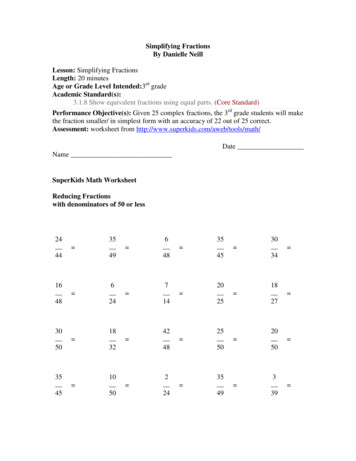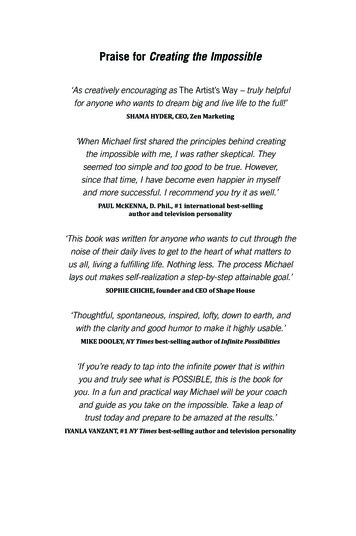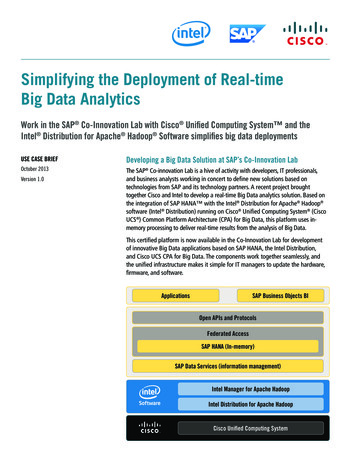
Transcription
Simplifying FractionsBy Danielle NeillLesson: Simplifying FractionsLength: 20 minutesAge or Grade Level Intended:3rd gradeAcademic Standard(s):3.1.8 Show equivalent fractions using equal parts. (Core Standard)Performance Objective(s): Given 25 complex fractions, the 3rd grade students will makethe fraction smaller/ in simplest form with an accuracy of 22 out of 25 correct.Assessment: worksheet from uperKids Math WorksheetReducing Fractionswith denominators of 50 or less2435 446 491648 18 2542 3420 1418 30457 2430 486 352725 20 503248505035102353 45 50 24 49 39
1434 40 2130 4810 50 40Key #2451445DateSuperKids Math Worksheet - AnswersReducing Fractionswith denominators of 50 or less246355644114971616324318 30354881741432710 3045934171204182225527942725120 57 5035 481164812 850135 1532 25053 51 4595052412497391314234174043031023482450540445 21 9
Make your own SuperKids Math Worksheetsat: http://www.superkids.com/aweb/tools/math/Copyright 1998 Knowledge Share LLC. May be photocopied for personal or schooluse only.Advance Preparation by Teacher: The teacher will need to create a worksheet in orderto evaluate whether the student learned the material. Gather materials, like candy andblocks that will be used during the lesson.Procedure:Introduction/Motivation: Start off by finding out what the students know aboutfractions. Also find out what the students can do. In order to find out talk about thedefinition and what a fraction actually is. A fraction is a part of a whole item. Forexample, when someone eats a fraction of the pizza they are eating a part of it.Step-by-Step Plan: Remember to add the identification with Gardner’sintelligences. (i.e. Gardner: Musical/Rhythmic)1.) Talk to the students about fractions. (Linguistic intelligence)2.) Ask the students if they know what simplifying means. If they do not knowwhat simplifying means, explain it.3.) Start off by showing the students how fractions work by using the blocks.Give examples of fractions that equal the same and can be simplified to thesame thing. (Bodily-Kinesthetic Intelligence)a. For example, 12/24 can be simplified to ½.4.) Ask students to give you some examples.5.) Explain how fractions work. Also, explain that in order to simplify fractionsyou must divide the fraction by the same number for both the numerator andthe denominator. (Logical/ Mathematical intelligence)6.) Make sure that the students understand how you have to divide the numeratorand denominator.7.) Do some examples problems.8.) Next, if you have time or if you want to get a bag of skittles you could do anactivity with the skittles. You could separate the skittles into colors. Then byusing colors as a whole you could explain how one fraction can equal thesame as another fraction.9.) Make sure that the students understand how to simplify fractions.10.) Finally, hand out a worksheet to the students and have them work on it.11.) Grade the worksheet and figure out if the goal was accomplished by yourworksheet.Closure: Ask the students what they learned about fractions. Also, grade theworksheet and talk with the students through the worksheet.Adaptations/Enrichment:Student with Learning disability in reading comprehension: The students withlearning disabilities in reading comprehension would really not be affected too
much when it comes to fractions. The students with a learning disability in mathcomprehension would probably have a problem. However, in fractions readingcomprehension would not affect whether a student could simplify a fraction ornot.Student with ADHD: Allow them to get more familiar with the blocks. Allowthem more time to complete the worksheet if needed. Allow them to ask questionswhile working on their worksheet.Student with Gifts and Talents in Creativity: Allow the students to create ablock 3-D model. Also, allow the students to explore a little. Let the student seewhat they can come up with.Self-Reflection:Write out the questions that you will use to evaluate yourself.What did the students seem to enjoy about the lesson?Was a worksheet the best way to evaluate the students’ performance?What did the students not like about the lesson?Did your lesson accomplish what you wanted it to accomplish?How can I improve this lesson next time I teach it?Manchester CollegeLesson plans- EDUC 230Name: Danielle NeillTeacher: Dr. Korrine GustDate :Title of Work: Reducing fractions1MC Lesson Plan Formatwith explicitly statedAcademic Standards.C1- Plans informative,developmentallyappropriate lessonsand/or unitsINTASC 2, 3, 4, 7Lesson Plan ObjectivesC1- Plans informative,developmentallyappropriate lessonsand/or unitsINTASC 2, 3, 4, 7AssessmentA1- Developsappropriate tools toassess learningINTASC 4, 8Procedures areCriteria2Points3Lesson planLesson does notLesson does notfollows most offollow MC formatfollow MC format orthe MC formatbut does statestate academicand explicitlyacademicstandards.states academicstandards.standards.Objectives areObjectives areincluded, but areincluded, relate tonot correctlyObjectives are notstated academicwritten or do notincluded.standard(s), butrelate to the statedare not mentPlannedmatches learningNo assessment isassessment doesobjectives, but isplanned.not match learningnot a part of theobjectives.procedures forthe lesson.Procedures are unclear Procedures areProcedures are4Lesson planfollows MCformat correctlyand explicitlystates academicstandards.4Objectives arewell written, andcorrelate well tostated academicstandard(s).4Plannedassessmentmatches learningobjectives and isembedded in theprocedures forthe lesson.Procedures can43
thoroughly written,including Gardner's MIand Bloom's Taxonomyquestions.and do not includeGardner or Bloomreferences.mostly clear andattempts to includeGardner andBloom references.C6- Uses effectivequestioning strategiesINTASC 4, 5, 7clear andreferences toGardner andBloom areattempted.be easilyreplicated byothers includingBloom'squestions and theuse of Gardner'sMI.Adaptations/Modificationsand EnrichmentOpportunitiesLessonE1- DifferentiatesLesson includesLesson does notLesson includesthoroughlymore than onelearning opportunitiesinclude reasonableone reasonabledetails reasonablereasonablethat respond toadaptations,adaptation and/oradaptations,adaptation and/ormodifications and/or modification andmodifications,individual learningmodifications andenrichmentan enrichmentand enrichmentstyles and learningan enrichmentopportunity.opportunity.opportunities thatchallenges INTASC 2,opportunity.are exemplary.3, 4, 53Grammar and SpellingR5- Modelsappropriate writtencommunication skillsINTASC 65 or more errors ingrammar and/orspelling are present.3-4 errors ingrammar and/orspelling arepresent.1-2 errors inNo errors ingrammar and/or grammar and/orspelling arespelling arepresent.present.4Total---- 22/24Teacher Comments:.
SuperKids Math Worksheet Reducing Fractions with denominators of 50 or less 24 44 35 49 6 48 35 45 30 34 16 48 6 24 7 14 20 25 18 27 30 50 18 32 42 48 25 50 20 50 35 45 10 50 2 24 35 49 3 39 14 21 34 48 40 50 30 40 10 45 Key #24514 Date _ SuperKids Math Worksheet - Answers Reducing Fractions with denominators of 50 or less 24 44 6











